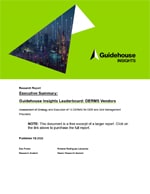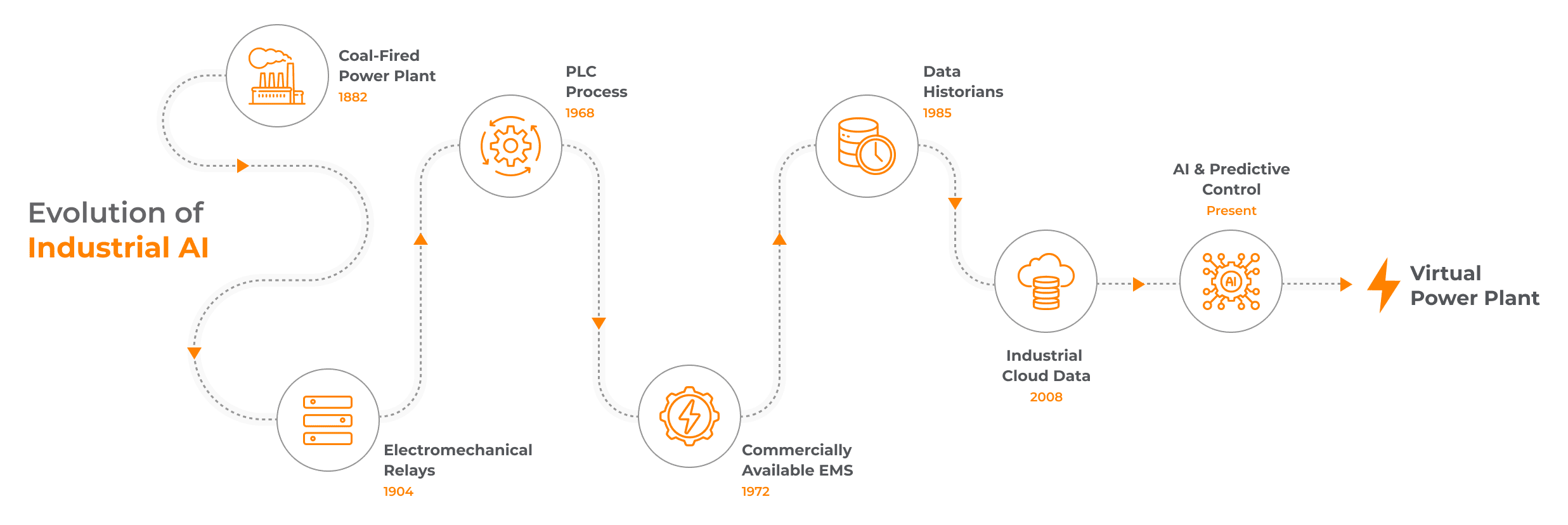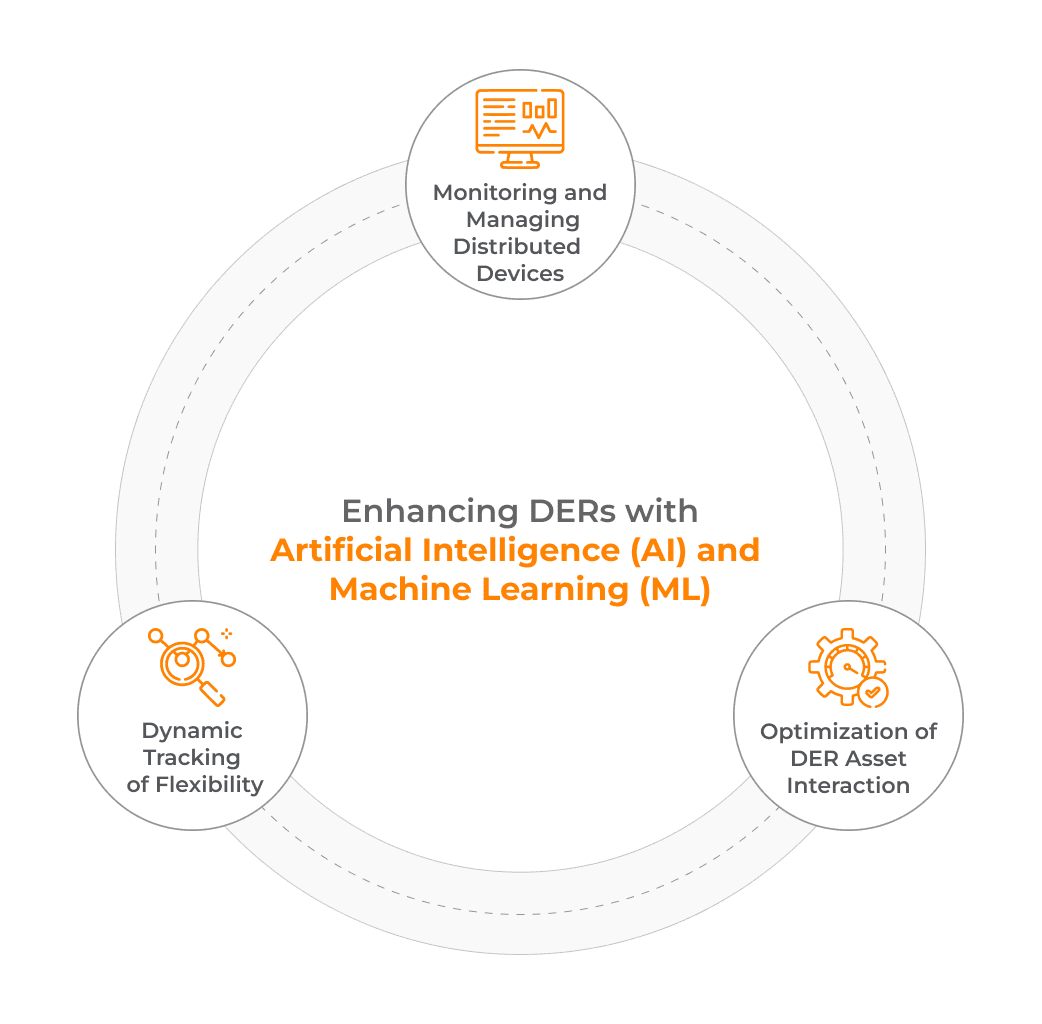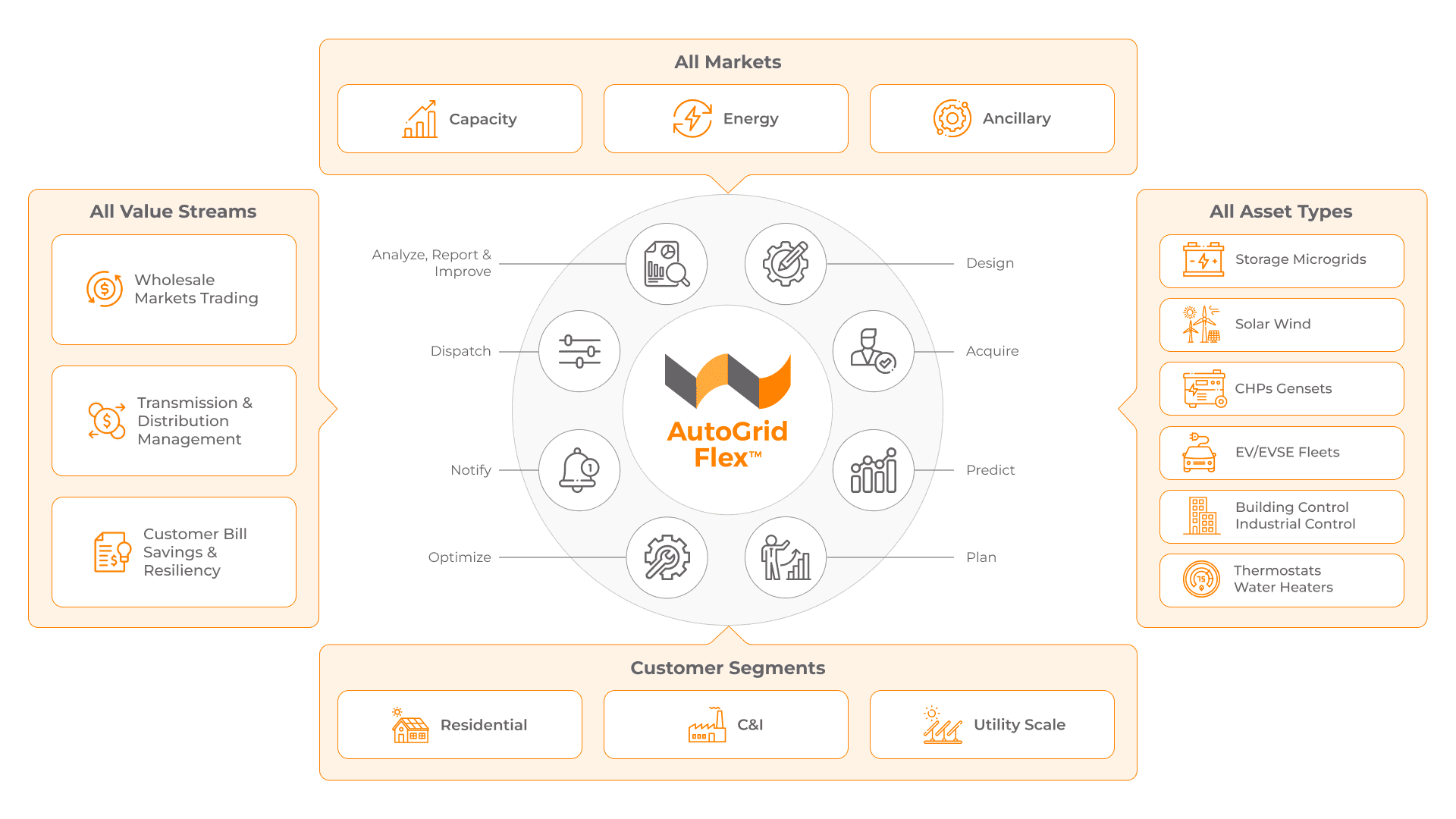In an era where artificial intelligence (AI) is impacting our lives across nearly every domain imaginable, its importance in the power systems sector cannot be overstated. Far more than just a buzzword, AI and the related term machine learning (ML) are cornerstones of cleantech.
In the dynamic and rapidly evolving energy landscape, where both resilience and sustainability increasingly matter, the integration and management of distributed energy resources (DERs) ranging from on-site rooftop solar photovoltaics (PV) to electric vehicles and even swimming pool pumps, have become paramount.
Orchestrating armies of diverse, decentralized DERs poses significant challenges for power providers, utilities and other grid operators. By harnessing advanced analytics, real-time monitoring, and optimization algorithms, AI-driven software platforms empower energy market participants to deliver immense value while adhering to the physical constraints of our power grids.
Are AI and ML the Same Thing?
First, let’s define these terms. AI is the simulation of human intelligence by computers that can perceive, synthesize, and infer information that improves performance over time. A common example is the voice recognition software many people now use on their mobile phones for texting. Social media platforms now also make suggestions of people and products based on your past search engine history and patterns.
When it comes to energy, the application of AI is producing dramatic results, and achieving outcomes that would be impossible for a human to replicate. The scale alone of the electric grid can overwhelm traditional resources, with millions of discrete endpoints all interacting in real time to maintain narrow frequency tolerances.
Machine learning could be considered a subset of AI, perhaps the most advanced form. ML relies upon a software system that can learn and adapt without following explicit instructions by using algorithms and statistical models to analyze and draw inferences from patterns of data. Note that my examples of AI could also be considered ML.
AI and ML are being leveraged to deliver groundbreaking new capabilities for a world seeking solutions to climate change by harnessing the power of prosumers across the globe. One way to envision the evolution of AI and its link to energy and related software is the roadmap below.
By using ML and AI, a growing number of digital software platforms are making VPPs not only possible, but also offering the kind of targeted interventions to keep the grid in balance, an application now commonly referred to as Distributed Energy Resource Management Systems or DERMS.
The AutoGrid Flex™ platform monitors and manages thousands of distributed devices, dynamically tracks flexibility, optimizes DER asset interactions, and scales VPP operations. The application of ML and AI in the power system domain represents a paradigm shift, enabling AutoGrid to optimize grid operations, improve reliability, and drive the clean energy transition forward. As AutoGrid continues to push the boundaries of innovation, ML and AI will remain crucial enablers for transforming the energy landscape and realizing the full potential of DERs.
Without AI and ML, the concept of a scalable virtual power plant (VPP) capable of delivering what the power grid needs in real time would not be possible.
Lessons Learned: Moore’s and Metcalfe’s Law
AutoGrid’s founder Amit Narayan recognized the power system’s untapped potential for optimization early on by applying algorithms and AI/ML techniques perfected in other domains:
“The big aha moment for me was, one, the importance of the grid and two, the concept that the laws of physics don’t change. One of the things that we did to keep up with Moore’s Law over the last 30-40 years, is to perfect our capability to optimize systems, which have literally billions of transmission lines, and how we can squeeze the maximum amount of performance, minimize power consumption, and so on. And so none of that technology was ever applied to the power system domain.”
Amit Narayan
Founder of AutoGrid
By embracing ML and AI, AutoGrid brought the benefits of Moore’s Law to the power system domain, unlocking new capabilities, flexibility and efficiency gains. Gordon Moore of Intel himself predicted this “law” may be obsolete by 2025. Why? Because it was thought that the energy consumption of transistors due to high temperatures would be greater than the amount of energy they actually transmit or process. Nevertheless, the fundamental concept helped shape thinking for AutoGrid and many other software companies transferring lessons learned in the IT realm to energy markets. The laws of physics governing energy systems, nevertheless, remain constant.
Another conceptual law known as Metcalfe’s Law is still directly relevant to AI and VPPs. Developed by electrical engineer Robert Metcalfe who invented the Ethernet, this law states that the value of telecommunications network is proportional to the number of connected users of the system squared. Network value correlates with network size: the more, the better. Applying this concept to electricity – and more specifically to VPPs – the larger the pool of available DERs that can be scheduled and controlled for any particular grid service, the closer one can get to capturing the maximum potential from a network or fleet of assets. In order words, the greater the number and diversity of DERs incorporated into a VPP, the greater the value to the grid. Managing that kind of complexity is only possible with AI and ML.
Harnessing the Power of DERs through AI and ML
Let’s look at a few tangible examples of how AutoGrid utilizes AI and ML to manage and operate virtual power plants:
Monitoring and Managing Distributed Devices
ML and AI algorithms to monitor and manage thousands of individual distributed devices are now possible. By enforcing numerous constraints per asset, AutoGrid Flex ensures that DERs participate consistently with the expectations of both customers/device owners and utility operators. Through real-time data processing, ML models can detect anomalies, identify potential issues, and enable proactive management, improving the overall stability and reliability of the grid.
Dynamic Tracking of Flexibility
ML and AI enable AutoGrid to dynamically track and forecast the flexibility available from each resource and combine them into aggregated capacity. By leveraging historical usage patterns, weather data, behavioral impacts, and more, AutoGrid’s advanced analytics generate accurate forecasts and models of DER performance. This enables efficient utilization of DERs while maintaining grid stability and minimizing costs.
Optimization of DER Asset Interaction
DER asset categories, such as solar PV panels, battery storage systems, and electric vehicles, must be optimally combined to achieve grid objectives. AutoGrid’s ML algorithms tackle the complex optimization problem of determining the ideal dispatch combination for limited resources. By accounting for each DER’s specific flexibility constraints, AutoGrid maximizes the overall grid efficiency and balances supply and demand in real-time.
Thanks to AI and ML, a state-of-the-art VPP is like running tens of thousands of power plants in parallel, ensuring they all operate cooperatively. So all the software functions required for a centralized peaker plant must be replicated thousands of times, and the complexity increases not linearly but exponentially. A daunting task, but commercial projects based on AI and ML technology are being deployed worldwide. ML and AI algorithms are instrumental in efficiently managing this complexity, orchestrating the aggregated resources, and ensuring seamless coordination across the VPP. Real-time decision-making and control become possible, allowing the VPP to respond rapidly to grid conditions and optimize energy flows.
Calculating Algorithms for Optimization of DERMS Applications
The effectiveness of ML and AI are also instrumental to DERMS due to the intricate algorithms that can maintain grid reliability through spikes in demand or quick drops in renewable energy generation. Data scientists and engineers worldwide work to develop and refine these algorithms, leveraging their expertise in optimization techniques and statistical modeling.
To optimize grid operations, AutoGrid’s algorithms consider a multitude of factors. They take into account real-time data from distributed devices, such as energy consumption, generation capacity, and grid constraints. By continuously monitoring and analyzing this data, the algorithms identify patterns, correlations, and anomalies to make accurate forecasts and predictions. By integrating these diverse datasets, AutoGrid’s algorithms generate models that provide a comprehensive understanding of the flexibility and capabilities of each individual DER.
Addressing the “System of Systems” Nature of DER Fleets
ML and AI capabilities extend beyond managing individual DERs. They address the inherent complexity of DER fleets aggregated into VPPs or managed for grid reliability by DERMS. – This one-to-many relationship introduces additional challenges in optimizing the collective performance of various types of DER assets operating in different locations and under diverse conditions..
AutoGrid’s algorithms excel in tracking and accounting for the interaction of different DER asset categories within a fleet. They evaluate the potential synergies and trade-offs between resources, determining how they can be optimally combined to achieve grid objectives. By understanding the limited amount of flexibility each DER can provide, the algorithms solve the intricate optimization problem of dispatching DER resources effectively.
The algorithms also consider the temporal and spatial aspects of DER fleets. They account for fluctuations in renewable generation such as solar and wind, variations in energy consumption patterns from devices such as air conditioners and heat pumps, and the dynamic nature of grid conditions, including extreme peaks in demand. By continuously adapting and recalibrating based on real-time data, AutoGrid’s algorithms ensure that the dispatch and coordination of DER assets remain responsive, flexible and efficient.
Conclusion: Unlocking the Full Potential of DERs
AutoGrid’s application of ML and AI in the power system domain represents a paradigm shift. By harnessing the power of these technologies, AutoGrid unlocks the full potential of DERs, transforming them into valuable grid assets. ML and AI enable AutoGrid to optimize power systems, maximize performance, minimize power consumption, and facilitate the seamless integration of DERs into the existing infrastructure.
As AutoGrid continues to push the boundaries of innovation, it invests in ongoing research and development to further enhance its ML and AI capabilities. By staying at the forefront of technological advancements, AutoGrid remains at the vanguard of the energy transition, empowering grid operators, utilities, and customers with the tools they need to build a more sustainable and efficient energy future. Consider what is now possible and being demonstrated by AutoGrid throughout global markets such as the U.S., Europe, and key Asia Pacific nations such as India, Australia and Japan.

Guidehouse DERMS Leaderboard
AutoGrid ranked #1 in comparison to 12 other industry companies.







